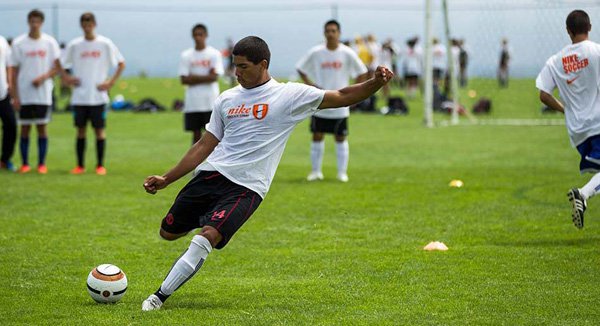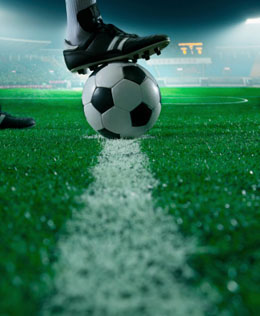Pitching 9 & 10 year olds
Question
What are some good drills and bullpen sessions that I can use to teach 9&10 year olds on control and speed. We are 7 weeks away from first game. I have some kids that have never pitched before. Where should I start?
Answer
Vinson: Thank you for your question.
I would start with their overall throwing motion, to be sure they have good throwing mechanics.
Mechanics:
1. Get them squared up to their target.
2. Hands together, ball in glove at chest level.
3. Have them break their hands, like cracking an egg, so that their thumbs are pointing down, glove is going towards target, throwing hand is taking the baseball down to their thigh.
4. The throwing motion goes; thumb to the thigh, knuckles to the sky ( they should be able to look back at their hand and see the back of their hand, not the baseball.) If they see the ball instead, rotate their hand so that they are looking at the back of their hand.
5. Step directly at their target with their front foot, taking their chest to their glove.
6. Follow through, so that they end up in a balanced athletic position. This follow through is what helps decelerate their arm.
The part about seeing the back of their hand is important. That helps keep the elbow up, which puts less strain on it. When their hand gets rotated, it drops the elbow down. If they throw that way, they will generally find that their elbow is sore. Creates too much pressure on it.
Something to watch for is they will often get their hand back, elbow up; but rotate the ball forward before they start to throw, dropping the elbow. It takes time, repetitions and practice to develop the throwing motion.
Stepping off line will also cause their elbow to drop, and the ball will come out of the side of their hand.
You can tell if the ball is released correctly by the spin. If it is rotating back to them, it is correct. If it is rotating sideways, it is coming out of their hand wrong.
Pitching mechanics: Pitches
1. I would suggest starting with a four seam fast ball. They will achieve the most velocity, as well as accuracy from that.
2. At some point, teach them a two seam fast ball, which will naturally move some, and finally a change up, like a simple pitchfork change, or a circle change.
3. They will all want to throw curve balls, sliders and splits. It is way too early for them to start with those pitches.
As pitching is all about disrupting a hitters' timing, what is important is the difference in speed between the fastball and change up. That difference is obtained by the grip that is used on the baseball. Arm speed and motion for the change up are the same as for the fastball. The grip on the ball for the change will slow the velocity down, give or take about 5 mph.
Pitching mechanics: Balance
1. Concentrate on balance. The ability to throw strikes, and throw the baseball in the location that they want it to go, is directly tied to balance.
2. Start by having them, from a set position, lift their front leg until their thigh is parallel to the floor. Have them hold that position and time them on how long they can hold it.
3. From that balance point, they will be going directly into the throwing motion, thumb to thigh, knuckles to the sky, elbow up high, point your glove and let it fly.
4. Good balance allows for little or no head movement, which is a plus.
Pitching drills:
1. Since you have 7 weeks to get ready, you might want to start out throwing on flat ground, using the foul line as a pitching rubber and stressing the throwing mechanics listed above.
2. In the bullpen, to avoid having a bullpen catcher all the time, have them throw to a screen, with a strike zone on it to start. Shorten the throwing distance to 25 feet, let them get used to new mechanics and the grip on the baseball.
3. You can make your own screen, or they make commercial ones which have strike zones on them. As they get proficient, tape smaller and more refined spots within, and outside of the strike zone for them to hit. The idea is to work on their balance, throwing motion and accuracy, all at a shortened distance and at around half speed.
4. Develop a game, where they start experimenting with different pitch patterns; example ~ 3-4 pitches inside, to set up a pitch outside, eventually that pitch would probably be a change up.
5. There are all kinds of patterns they can come up with. The key is the ability to throw whatever pitch it is, for a strike. Until that happens, it really isn't a pitch, it is just something they throw.
6. This same screen and drill can be used at the full 46' distance as well. It provides a purpose to their throwing, so they are not just mechanically throwing at the plate.
Pitching: Simulated game with screen, or a catcher.
1. Throw a simulated game, keep track of balls and strikes. Strike outs are outs, walks are base runners. It is good as you can limit the number of innings, or pitches as you want. After they become comfortable with it, move it up a notch to where they are calling what pitch they are throwing, and why. It will help them learn the game, and the art of setting hitters up. In this scenario, if they hit the location it is a strike. If they miss, out of the strike zone, it is a ball. If they miss, but it is out in the bigger strike zone, it is a home run. That is often what happens in a game as they get older, and miss back out over the plate.
Teach them that the best pitch in baseball is not a fastball, curveball or changeup, IT IS STRIKE ONE! On my website, www.theoleballgame.com, I have a page on hitting, which has the hitting splits for major league baseball, and what the major league average was for those counts. It is about hitting; but is just as effective information for pitchers, to know how hard it is for hitters to hit, when behind in the count, even at the major league level.
If you click on Baseball Instruction, Hitting on the Nav Bar, then scroll down to the links at the bottom to Proven Team Approach, you will find the splits on that page.
It sounds like you will be busy. Good luck to you and your team. Have fun with it. You will be teaching them much more than baseball.
Yours in baseball,
Rick
1st Base Obstruction
fear when batting


